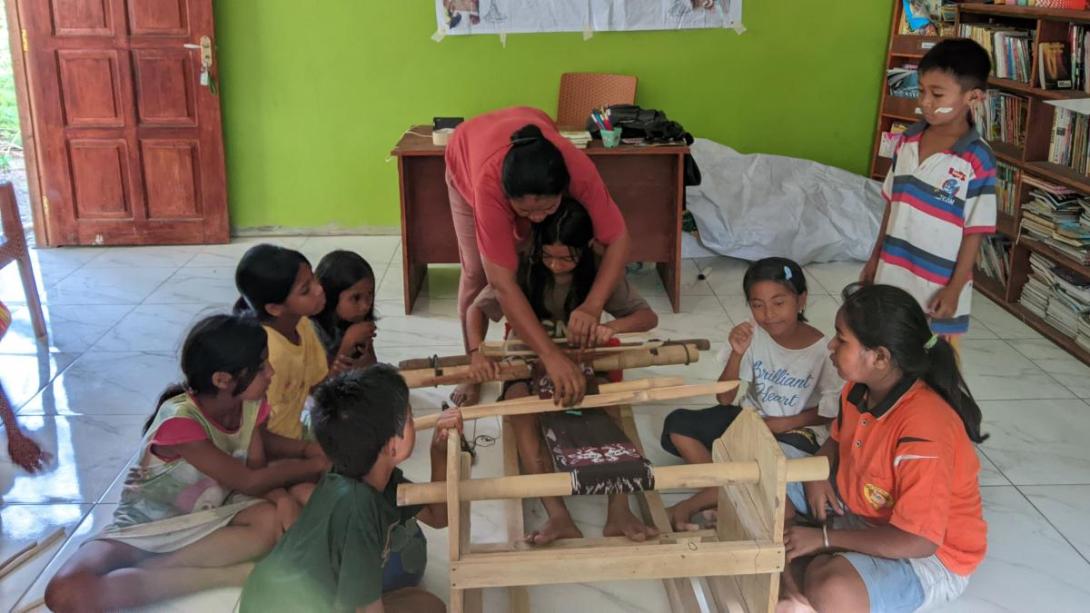
“Sometimes the unexpected moments become the most powerful ones—like seeing a girl who was excluded by society begin to feel seen, valued, and included.”
The overall aim of the project is to encourage children aged 10 to 16 years to be actively involved and support the creativity of learning process at the Cahaya Anak Sumba (CAS) Learning Centre. In addition, this project aims to regenerate the values of Sumbanese culture through various extracurricular activities conducted outside formal schoolings.
Main Objectives:
- To increase participation of the target community, enrolling at least 40 children aged between 10 and 16 years old on the creative courses and training projects
- To develop skills and foster a sense of love for the Sumba ikat weaving culture from an early age, by ensuring that at least 70% of the participants can create a basic Sumba ikat woven shawl by the end of the course.
- To cultivate a sense of self-care based on healthy lifestyle and personal hygiene among at least 70% of the teenagers participating in the courses.
- To promote creativity and innovation in teaching and learning experiences for participants, allowing them to self-experiment and express themselves.
- To involve stakeholders, secure active involvement from at least three key stakeholders (e.g., local government, community leaders, NGOs) in supporting the project through various interventions.
Selia’s project, Rukku Lima Anakiada Humba, was designed to revive and sustain the rich tradition of Sumba ikat weaving by introducing it to children and teenagers through creative learning activities. The project targeted youth aged 10–16 years from Mbatakapidu and Lambanapu villages, aiming to nurture both cultural pride and life skills through a combination of traditional arts education and personal development workshops at the Cahaya Anak Sumba Learning Centre (CAS).
Two key components were delivered: a personal self-care workshop (separately for girls and boys) and a traditional weaving workshop. The self-care sessions taught participants about hygiene, health, and self-awareness as they transition into adolescence, while also responding to the girls’ own request to include basic makeup training. The weaving workshop went beyond technical skill, embedding lessons on the history, symbols, and philosophy of Sumbanese weaving, helping children appreciate their identity and develop practical craftsmanship. A total of 52 participants took part, supported by youth volunteers and a local weaving teacher.

The project led to increased confidence among the children, greater cultural understanding, and requests from participants to make the activities regular. Notably, one deeply moving story involved a girl from a marginalized background who, through the project, found a sense of belonging, self-worth, and dignity. Selia reflected that this project strengthened her leadership and communication skills, and taught her the importance of empathy, inclusion, and adaptive planning—highlighting that the work was not only about preserving culture but also about healing and empowerment.

